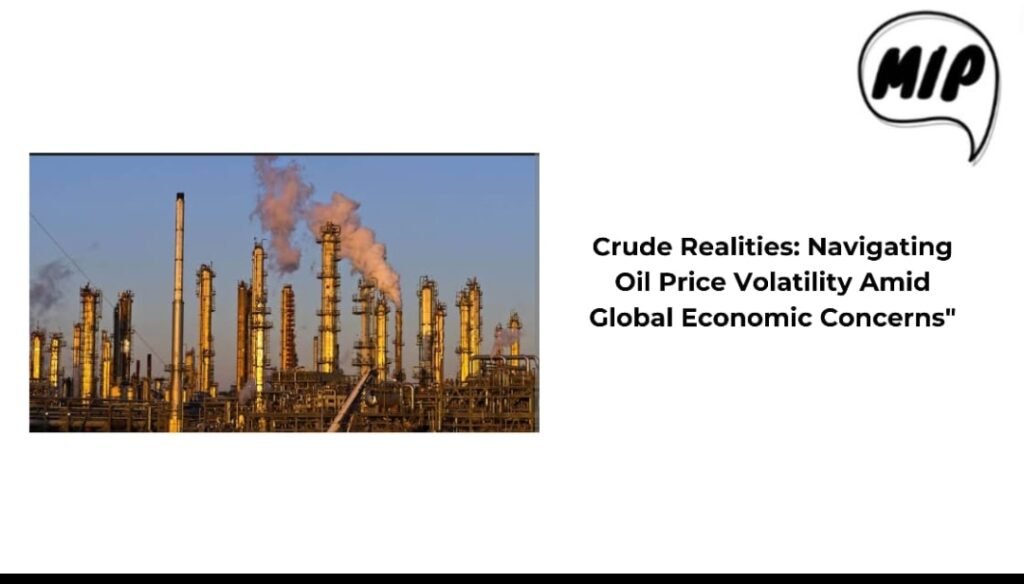
Oil prices rose on Friday but are set to fall for a third week amid signs of slowing demand and as market attention turns to a key meeting of OPEC and its allies this month which will determine the group’s next move on production.
Brent crude futures for January were up 99 cents, or 1.2 per cent, at $81 a barrel at, while US West Texas Intermediate (WTI) crude futures for December were at $76.67, up 93 cents, also 1.2 per cent. Both contracts are set to fall about 5 per cent on the week, according to news agency Reuters.
Back home, on the Multi Commodity Exchange (MCX), crude oil futures due for a November 17 expiry, was last trading higher by 1.22 per cent at ₹6,450 per bbl, having swung between ₹6,330 and ₹6,472 per bbl during the session so far, against a previous close of ₹6,372 per barrel
Weak Chinese economic data this week increased worries of faltering demand. Also, refiners in China, the largest buyer of crude oil from the world’s largest exporter Saudi Arabia, asked for less supply from Saudi Arabia for December.
-US WTI rose 1.7 per cent to trade around $77 a barrel on Friday as broader financial markets recovered from Federal Reserve Chair Jerome Powell’s comments that officials won’t hesitate to tighten policy more. Still, concerns about waning demand and higher supply are driving a longer-term retreat in crude prices.
The Organization of the Petroleum Exporting Countries and allies led by Russia, or OPEC+, meet on November 26 to set production policy. Investors will focus on whether Saudi Arabia extends the 1 million barrel-per-day voluntary cut set to expire at the end of this year.
The benchmark WTI has plunged around 13 per cent in the past three weeks on bearish consumption signals from China, the US and Europe. Meanwhile, flows from the Middle East remain unaffected by the Israel-Hamas war despite mounting concerns of a potential two-front conflict as Hezbollah, a Lebanon-based Islamist group, intensifies its offensive.
Crude oil prices have experienced a significant downturn, plummeting by nearly 10 per cent over the past eight days. On Wednesday, the price of Brent crude dropped below $80 per barrel for the first time since July, driven by mounting concerns about demand due to the lackluster economic outlook in China and Europe.
Analysts at Citi said in a note earlier this week that they expected the downward pressure to ease and prices to recover after falling to their lowest since July.
We expect prices to consolidate, and we maintain our near-term price forecasts with support expected to come from refinery maintenance easing and a shift in the risk-reward for investors following the recent sell-off,” said Citi.
Projections from the EIA indicate that US crude production will see a slight increase this year, falling slightly below earlier expectations. However, there’s an anticipated decline in petroleum consumption by 300,000 barrels per day (bpd), which contrasts sharply with the previous forecast of a 100,000-bpd increase.
This shift has been intensified by a notable decrease in Chinese imports, further exacerbating worries about oil demand. Consequently, this triggered a significant selloff in the crude oil market. Recession fears within the Eurozone have also exerted pressure on crude oil prices, noted analysts
Expectations suggest that crude oil prices will likely continue to be volatile in the present session. The support levels for crude oil stand at $74.30–73.50, with resistance identified at $76.10-76.80. In terms of the INR, crude oil has support around ₹6,200-6,120 and faces resistance at ₹6,365-6,440,’’ said Rahul Kalantri, VP Commodities, Mehta Equities Ltd.